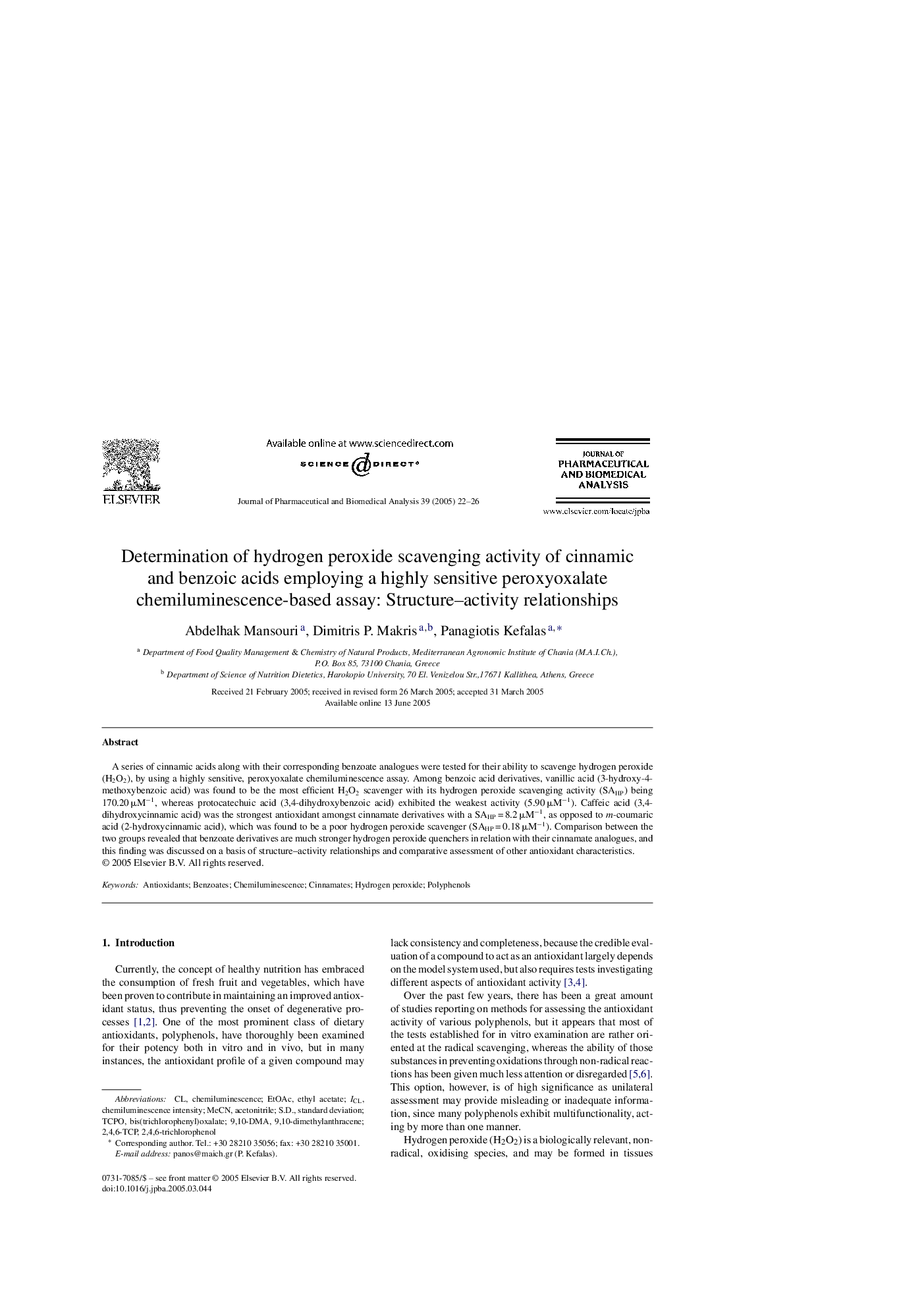| Article ID | Journal | Published Year | Pages | File Type |
|---|---|---|---|---|
| 9754481 | Journal of Pharmaceutical and Biomedical Analysis | 2005 | 5 Pages |
Abstract
A series of cinnamic acids along with their corresponding benzoate analogues were tested for their ability to scavenge hydrogen peroxide (H2O2), by using a highly sensitive, peroxyoxalate chemiluminescence assay. Among benzoic acid derivatives, vanillic acid (3-hydroxy-4-methoxybenzoic acid) was found to be the most efficient H2O2 scavenger with its hydrogen peroxide scavenging activity (SAHP) being 170.20 μMâ1, whereas protocatechuic acid (3,4-dihydroxybenzoic acid) exhibited the weakest activity (5.90 μMâ1). Caffeic acid (3,4-dihydroxycinnamic acid) was the strongest antioxidant amongst cinnamate derivatives with a SAHP = 8.2 μMâ1, as opposed to m-coumaric acid (2-hydroxycinnamic acid), which was found to be a poor hydrogen peroxide scavenger (SAHP = 0.18 μMâ1). Comparison between the two groups revealed that benzoate derivatives are much stronger hydrogen peroxide quenchers in relation with their cinnamate analogues, and this finding was discussed on a basis of structure-activity relationships and comparative assessment of other antioxidant characteristics.
Keywords
Related Topics
Physical Sciences and Engineering
Chemistry
Analytical Chemistry
Authors
Abdelhak Mansouri, Dimitris P. Makris, Panagiotis Kefalas,
